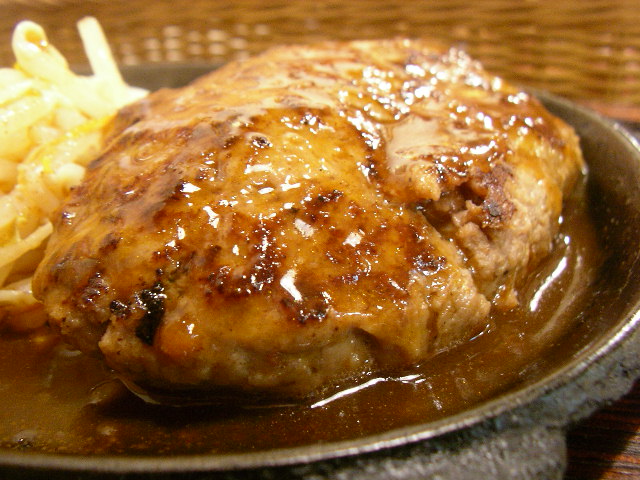|
Salamanca, Guanajuato
Salamanca ( Otomi: ''Xidoo'' "Place of Tepetate") is a city and municipality in the Mexican state of Guanajuato. The city was founded on January 1, 1603, as 'Villa de Salamanca' by the Viceroy Gaspar de Zúñiga, fifth Count of Monterrey, who was originally from Salamanca (Spain). The town was founded in the lands of the Bajío, after cattle ranchers and poor farmers, a few Spaniards, and small groups of Otomis who formerly occupied a village named Xidoo, already lived in the area. In recent years, many refineries have opened, and Salamanca has grown rapidly to become an important site for manufacturing and service industry in the region. Also, the University of Guanajuato has made many scientific contributions to develop agricultural and industrial technologies, giving a boost to the local and regional industries. The city reported a 2020 census population of 160,682. The fourth largest city in the state (behind León, Irapuato, and Celaya), it is also the largest of four pl ... [...More Info...] [...Related Items...] OR: [Wikipedia] [Google] [Baidu] |
Municipalities Of Mexico
Municipalities () are the administrative divisions under the List of states of Mexico, states of Mexico according to the Constitution of Mexico, constitution. Municipalities are considered as the second-level administrative divisions by the Federal government of Mexico, federal government. However, some state regulations have designed intrastate regions to administer their own municipalities. Municipalities are further divided into Localities of Mexico, localities in the structural hierarchy of administrative divisions of Mexico. As of December 2024, there are 2,462 municipalities in Mexico. In Mexico, municipalities should not be confused with cities (). Cities are Localities of Mexico, locality-level divisions that are administered by the municipality. Although some List of cities in Mexico, larger cities are consolidated with its own municipality and form a single level of governance. In addition, the 16 Boroughs of Mexico City, boroughs of Mexico City are considered municipali ... [...More Info...] [...Related Items...] OR: [Wikipedia] [Google] [Baidu] |
Oaxaca City
Oaxaca de Juárez (), or simply Oaxaca (Valley Zapotec languages, Zapotec: ''Ndua''), is the capital and largest city of the eponymous Administrative divisions of Mexico, Mexican state of Oaxaca. It is the municipal seat for the surrounding municipality of Oaxaca, the most populous municipality in Oaxaca and the fourth most densely populated municipality in Oaxaca, only being less densely populated than San Jacinto Amilpas, Santa Lucía del Camino, and Santa Cruz Amilpas. It is in the Centro District, Oaxaca, Centro District in the Valles Centrales de Oaxaca, Central Valleys region of the state, in the foothills of the Sierra Madre at the base of the Cerro del Fortín, extending to the banks of the Atoyac River (Oaxaca), Atoyac River. Heritage tourism makes up an important part of the city's economy, and it has numerous colonial-era structures as well as significant archeological sites and elements of the continuing native Zapotec civilization, Zapotec and Mixtec cultures. The cit ... [...More Info...] [...Related Items...] OR: [Wikipedia] [Google] [Baidu] |
Mazda
is a Japanese Multinational corporation, multinational automotive manufacturer headquartered in Fuchū, Hiroshima (town), Fuchū, Hiroshima Prefecture, Hiroshima, Japan. The company was founded on January 30, 1920, as Toyo Cork Kogyo Co., Ltd., a cork-making factory, by Jujiro Matsuda. The company then acquired Abemaki Tree Cork Company. It changed its name to Toyo Kogyo Co., Ltd. in 1927 and started producing vehicles in 1931. Mazda is known for its innovative technologies, such as the Wankel engine, the SkyActiv platform, and the Kodo Design language. It also has a long history of motorsport involvement, winning the 24 Hours of Le Mans in 1991 with the rotary-powered Mazda 787B. In the past and present, Mazda has been engaged in alliances with other automakers. From 1974 until the late 2000s, Ford Motor Company, Ford was a major shareholder of Mazda. Other partnerships include Toyota, Nissan, Isuzu, Suzuki and Kia. In 2023, it produced 1.1 million vehicles globally. The ... [...More Info...] [...Related Items...] OR: [Wikipedia] [Google] [Baidu] |
Pemex
Pemex (a portmanteau of Petróleos Mexicanos, which translates to ''Mexican Petroleum'' in English; ) is the Mexico, Mexican State ownership, state-owned Petroleum industry, petroleum corporation managed and operated by the government of Mexico, Mexican government. It was formed in 1938 by nationalization and expropriation of all Mexican oil expropriation, private oil companies in Mexico at the time of its formation. Pemex had total assets worth $101.8 billion in December 2019 and as of 2009 was Latin America's second largest enterprise by annual revenue, surpassed only by Petrobras (the Brazilian national oil company). The company is the seventh most polluting in the world according to ''The Guardian''. History Asphalt concrete, Asphalt and Pitch (resin), pitch had been worked in Mexico since the time of the Aztecs. Small quantities of petroleum, oil were first refined into kerosene around 1876 near Tampico. By the early 20th century, commercial quantities of oil were being ... [...More Info...] [...Related Items...] OR: [Wikipedia] [Google] [Baidu] |
Petrochemical Industry
file:Jampilen Petrochemical Co. 02.jpg, 300px, Jampilen Petrochemical co., Asaluyeh, Iran The petrochemical industry is concerned with the production and trade of petrochemicals. A major part is constituted by the plastics industry, plastics (polymer) industry. It directly interfaces with the petroleum industry, especially the downstream (petroleum industry), downstream sector. Companies The top global petrochemical companies based on different KPIs: Countries and sites *Marun petrochemical complex Technology Conferences *Asia Petrochemical Industry Conference *International Petrochemical Conference by the American Fuel and Petrochemical Manufacturers, AFPM Associations *American Fuel and Petrochemical Manufacturers (AFPM) *European Petrochemical Association (EPCA) *Gulf Petrochemicals and Chemicals Association (GPCA) *Petrochemicals Europe (industry sector of Cefic) Awards *Medal "For the Tapping of the Subsoil and Expansion of the Petrochemical Complex of Western Siberia ... [...More Info...] [...Related Items...] OR: [Wikipedia] [Google] [Baidu] |
Ice Cream
Ice cream is a frozen dessert typically made from milk or cream that has been flavoured with a sweetener, either sugar or an alternative, and a spice, such as Chocolate, cocoa or vanilla, or with fruit, such as strawberries or peaches. Food colouring is sometimes added in addition to Food stabilizer, stabilizers. The mixture is cooled below the freezing point of water and stirred to incorporate air spaces and prevent detectable ice crystals from forming. It can also be made by Whisk, whisking a flavoured cream base and liquid nitrogen together. The result is a smooth, semi-solid foam that is solid at very low temperatures (below ). It becomes more Ductility, malleable as its temperature increases. Ice cream may be served in dishes, eaten with a spoon, or licked from edible wafer Ice cream cone, ice cream cones held by the hands as finger food. Ice cream may be served with other desserts—such as cake or pie—or used as an ingredient in cold dishes—like ice cream floats, s ... [...More Info...] [...Related Items...] OR: [Wikipedia] [Google] [Baidu] |
Ice Pop
An ice pop is a liquid/cream-based frozen dessert on a stick. Unlike ice cream or sorbet, which are whipped while freezing to prevent ice crystal formation, an ice pop is frozen while at rest, becoming a solid block of ice with an icy texture. It is a fusion of flavored liquid, like juice or a sweetened water-based liquid. The stick is used as a handle to hold it. Without a stick, the frozen product would be a freezie. It can be calorie restricted, but commercial options usually contain added sugars, corn syrup and artificial ingredients. An ice pop is also referred to as a popsicle (a brand name) in Canada and the United States, a paleta in Mexico, the Southwestern United States and parts of Latin America, an ice lolly, lollipop or lolly in the United Kingdom and Ireland, an ice block in New Zealand and Australia, an ice drop in the Philippines, an ice gola in India, ice candy in the Philippines, India and Japan, ai tim tang or ice cream tang in Thailand, and a kisko in th ... [...More Info...] [...Related Items...] OR: [Wikipedia] [Google] [Baidu] |
Cecina (meat)
In Spanish, ''cecina'' is meat that has been salted and dried by means of air, sun or smoke. The word comes from the Latin (dry), via Vulgar Latin ''(caro) *siccīna'', "dry (meat)". Spain Cecina is similar to ham and is made by curing cow, horse or rabbit meat. The best known ''cecina'' is ''Cecina de León'', which is made of the hind legs of a cow, salted, smoked and air-dried in the provinces of León and Palencia in northwestern Spain, and has PGI status. Latin America The word ''cecina'' is also used to name other kinds of dried or cured meat in Latin America. Mexico In Mexico Mexico, officially the United Mexican States, is a country in North America. It is the northernmost country in Latin America, and borders the United States to the north, and Guatemala and Belize to the southeast; while having maritime boundar ..., most ''cecina'' is of two kinds: sheets of marinated beef, and a pork cut that is sliced or butterflied thin and coated with chili pepper (t ... [...More Info...] [...Related Items...] OR: [Wikipedia] [Google] [Baidu] |
Birria
Birria () is a regional variation of barbacoa from western Mexico, mainly made with goat, beef or lamb. The meat is marinated in an adobo made of vinegar, dried chiles, garlic, and herbs and spices (including cumin, bay leaves, and thyme) before being cooked in a broth (). Originally, ''birria'' was the regional name given in the state of Jalisco and surrounding areas to meats cooked or roasted in a pit or earth oven, what is known as barbacoa in other regions of Mexico, but for many people today, mostly in the United States, ''birria'' is now a distinct dish. It is often served at celebratory occasions such as weddings, baptisms and during holidays such as Christmas and Easter, and even at funerals. Preparation techniques vary, but the dish is often served with corn tortillas, onions, cilantro, and lime. Birria is also served with tacos. Rafael Hernández, "Birria," in ''Celebrating Latino Folklore: An Encyclopedia of Cultural Traditions'', Vol. 1 (2012, ed. María Herrera-S ... [...More Info...] [...Related Items...] OR: [Wikipedia] [Google] [Baidu] |
Arrachera
Skirt steak is the US name for a cut of beef steak from the plate. It is long, flat, and prized for its flavor rather than tenderness. It is distinct from hanger steak (US), also called skirt (UK) or onglet (France), a generally similar adjacent cut also from the plate. Though it is from a different part of the animal, its general characteristics and uses cause it to be confused with both flank steak, taken from the flank behind the plate, and the flap meat from the bottom sirloin behind the flank and above the rear quarter. Characteristics Both the inside and outside skirt steak are the trimmed, boneless portion of the diaphragm muscle attached to the 6th through 12th ribs on the underside of the short plate. This steak is covered in a tough membrane that may be removed before cooking. By keeping the membrane it will be more tender but would require the eater to remove it which is why many remove it prior to cooking. The inside skirt steak is often confused with th ... [...More Info...] [...Related Items...] OR: [Wikipedia] [Google] [Baidu] |
Carnitas
Carnitas, literally meaning "little meats", in Mexican cuisine, is a dish made by braising, simmering and frying pork in its own fat, lard or cooking oil. The name "''Carnitas''" is, historically, the colloquial name given in Mexico for the French dish ''Rillons de Tours'' also known in Spanish as ''Chicharrón de Tours''. The process takes three to four hours, and the result is very tender and juicy meat, which is then typically served with chopped cilantro (coriander leaves), diced onion, salsa (sauce), salsa, guacamole, tortillas, and refried beans (''frijoles refritos''). Description Pork carnitas are traditionally made using the heavily Marbled meat, marbled, rich Boston butt or picnic ham cuts of pork which is seasoned heavily before slow braising or deep frying. Carnitas can also be made of chicken, using breasts or thighs, and cooking in a similar manner. The traditional way to cook carnitas is in a thick-bottomed pot with seasonings simmered in lard until tender ove ... [...More Info...] [...Related Items...] OR: [Wikipedia] [Google] [Baidu] |
Hamburger
A hamburger (or simply a burger) consists of fillings—usually a patty of ground meat, typically beef—placed inside a sliced bun or bread roll. The patties are often served with cheese, lettuce, tomato, onion, pickles, bacon, or chilis with condiments such as ketchup, mustard, mayonnaise, relish or a "special sauce", often a variation of Thousand Island dressing, and are frequently placed on sesame seed buns. A hamburger patty topped with cheese is called a cheeseburger. Under some definitions, and in some cultures, a hamburger is considered a sandwich. Hamburgers are typically associated with fast-food restaurants and diners but are also sold at other restaurants, including high-end establishments. There are many international and regional variations of hamburgers. Some of the largest multinational fast-food chains feature burgers as one of their core products: McDonald's Big Mac and Burger King's Whopper have become global icons of American culture. Etymology an ... [...More Info...] [...Related Items...] OR: [Wikipedia] [Google] [Baidu] |





